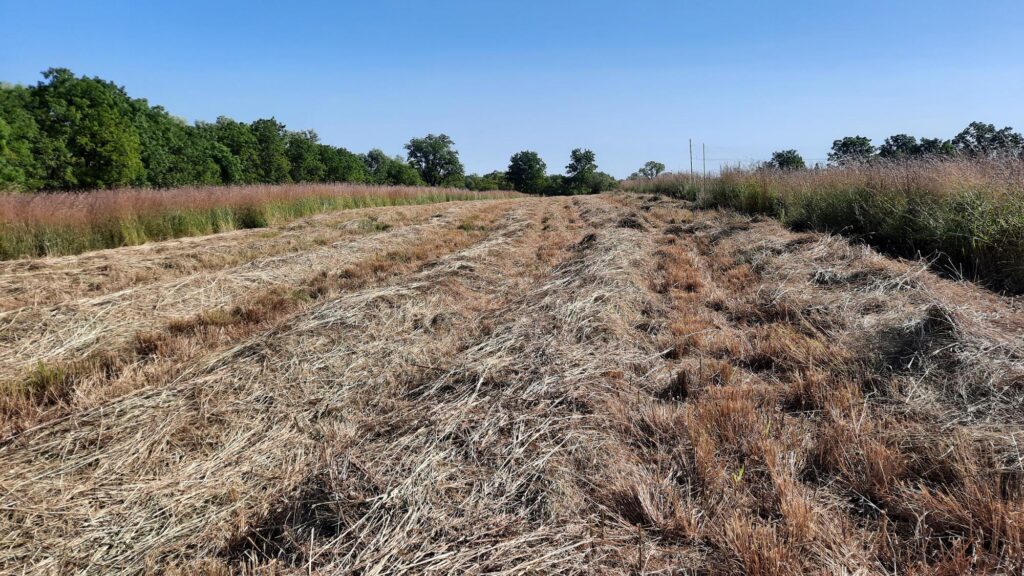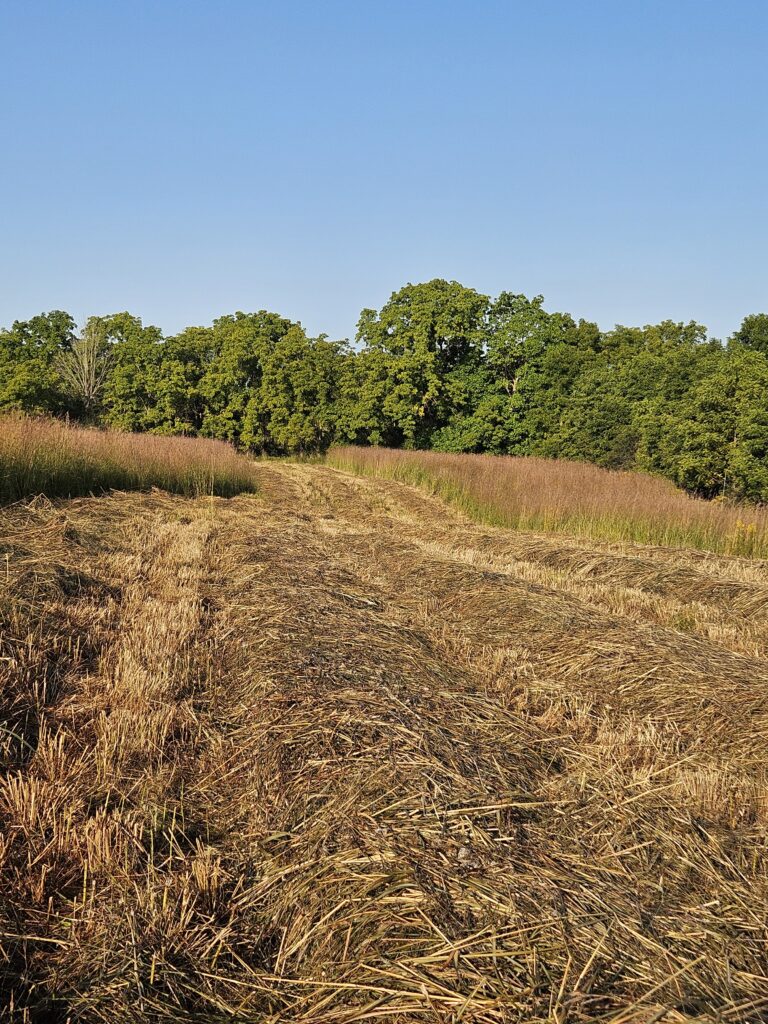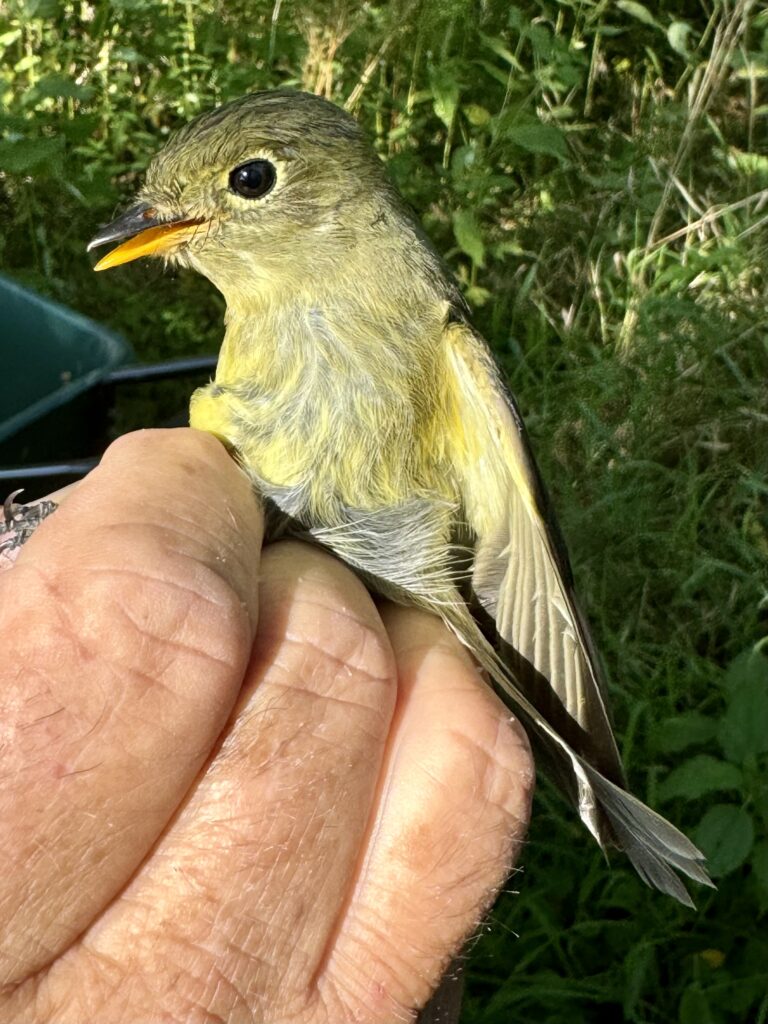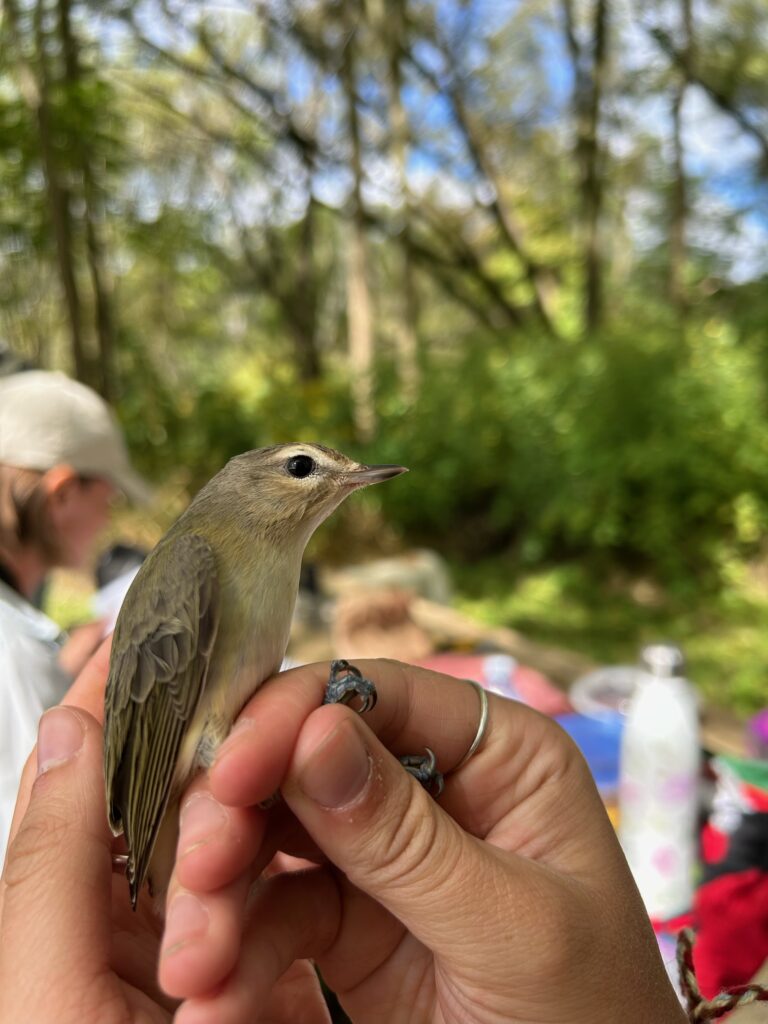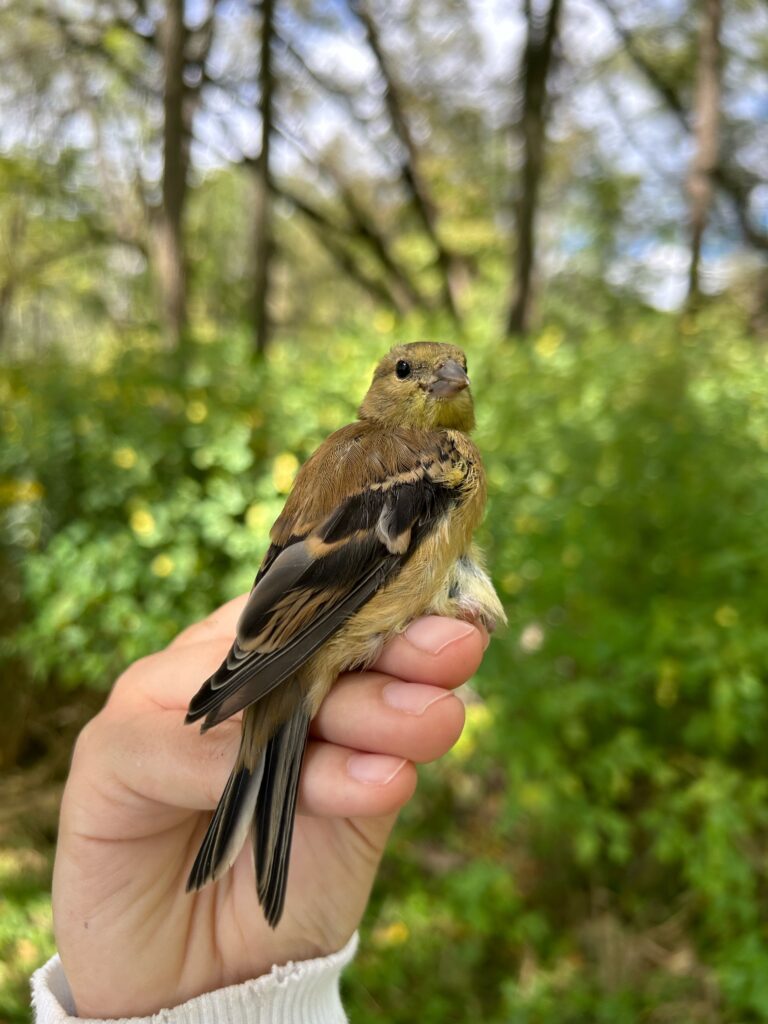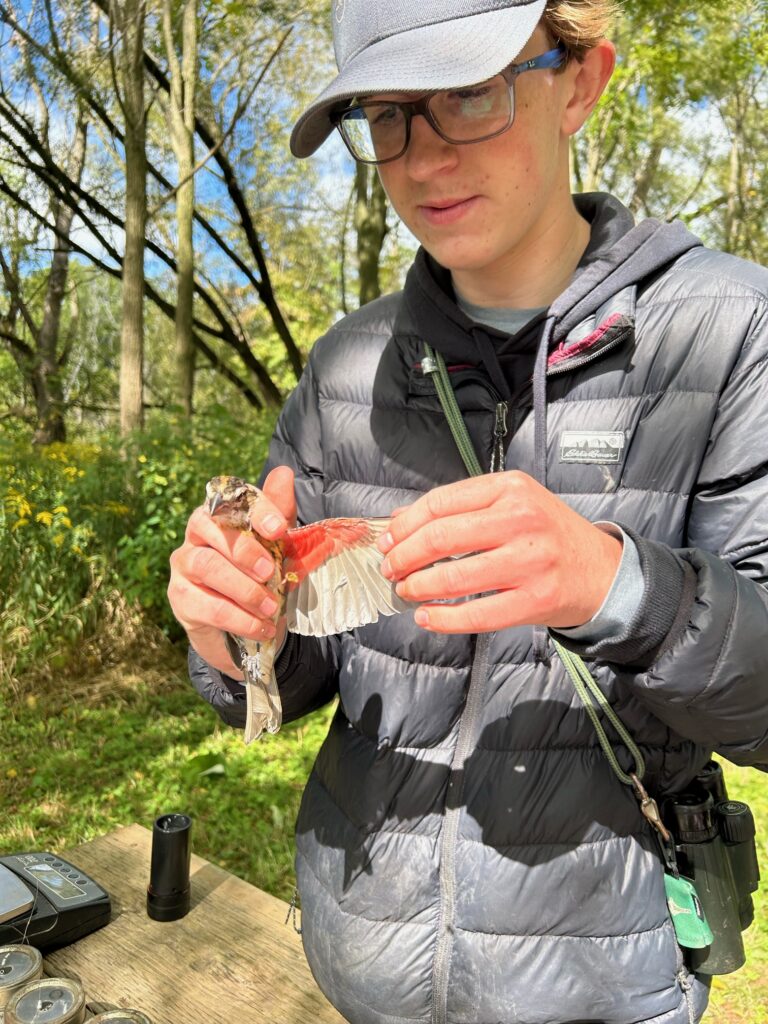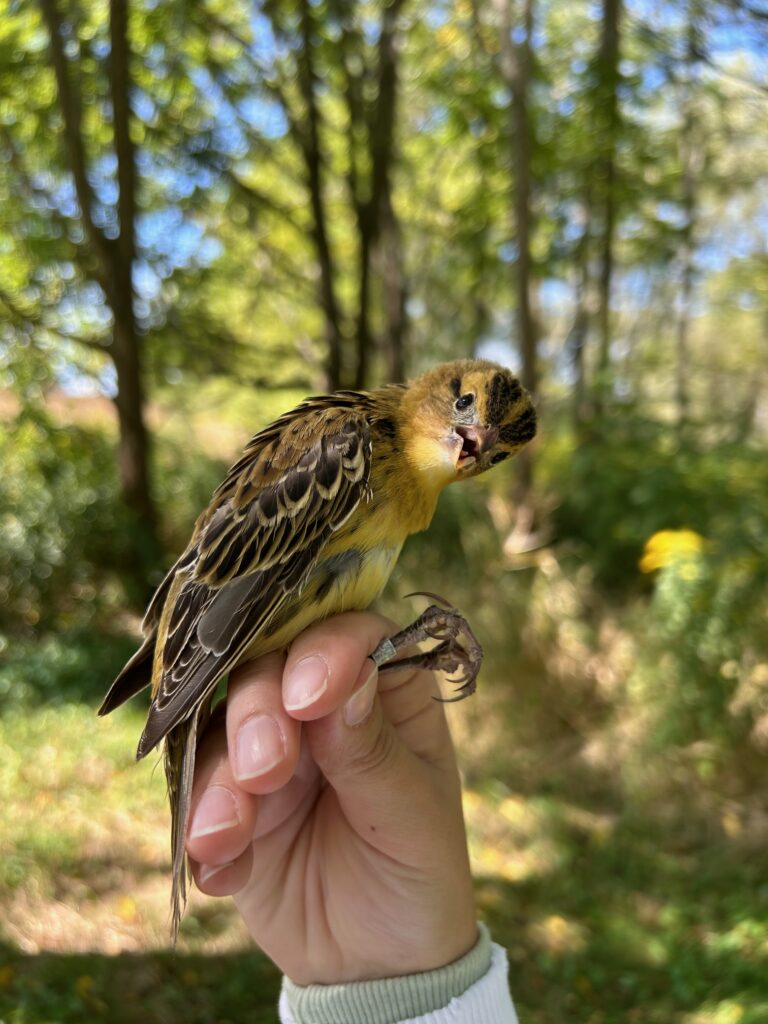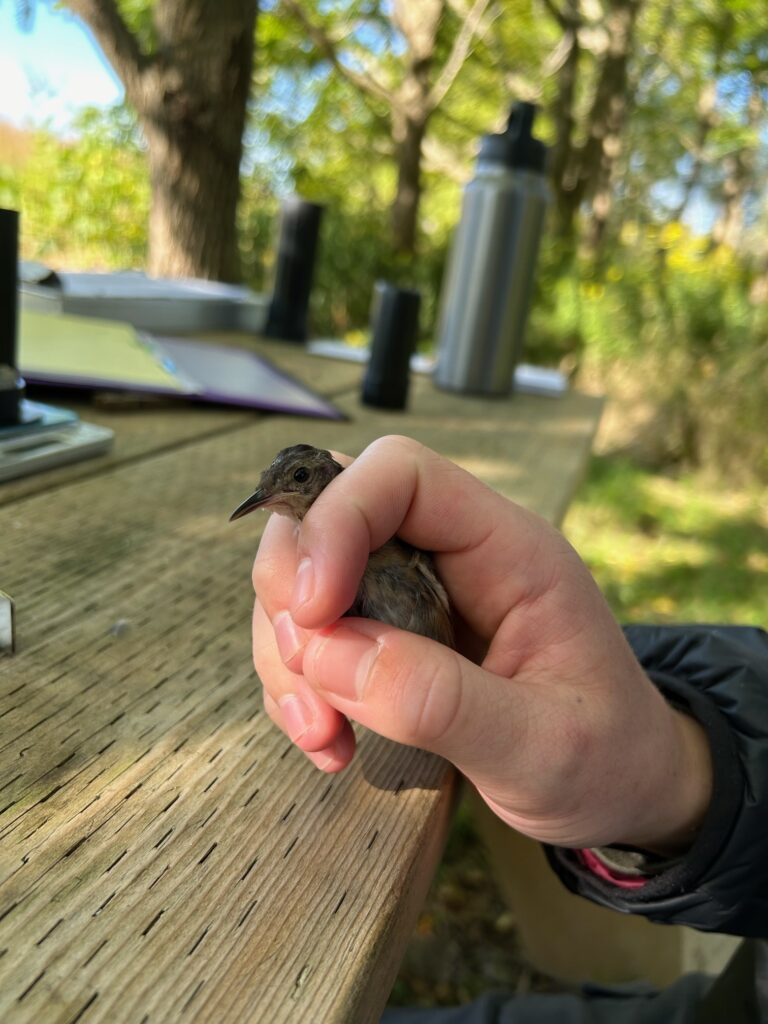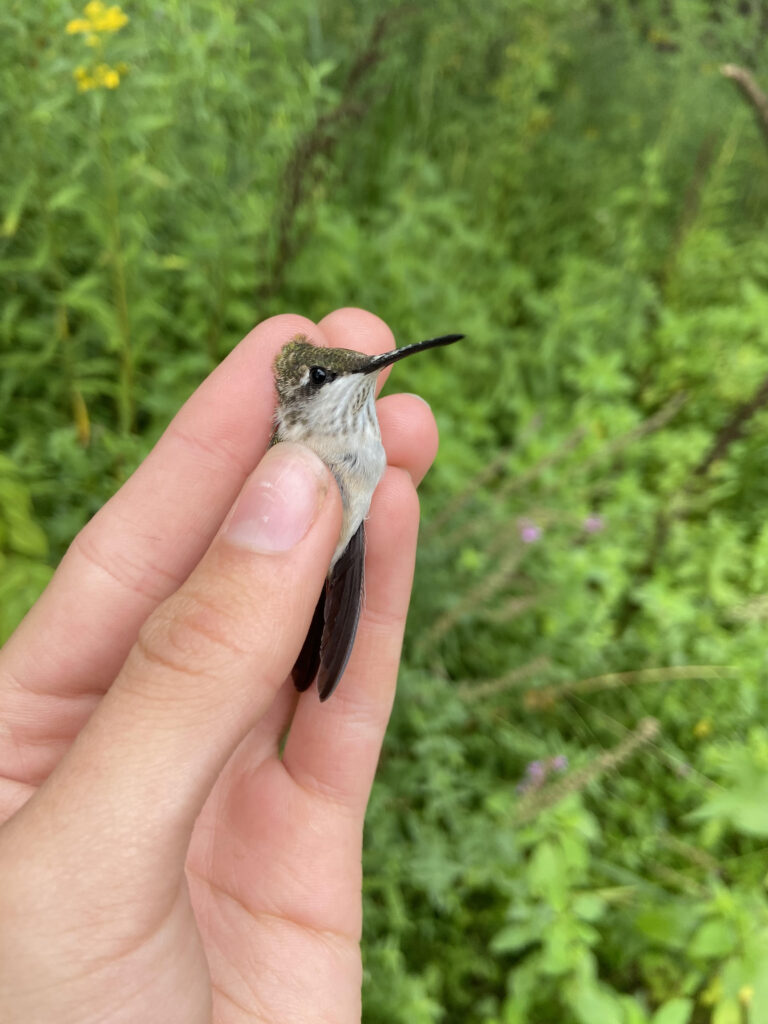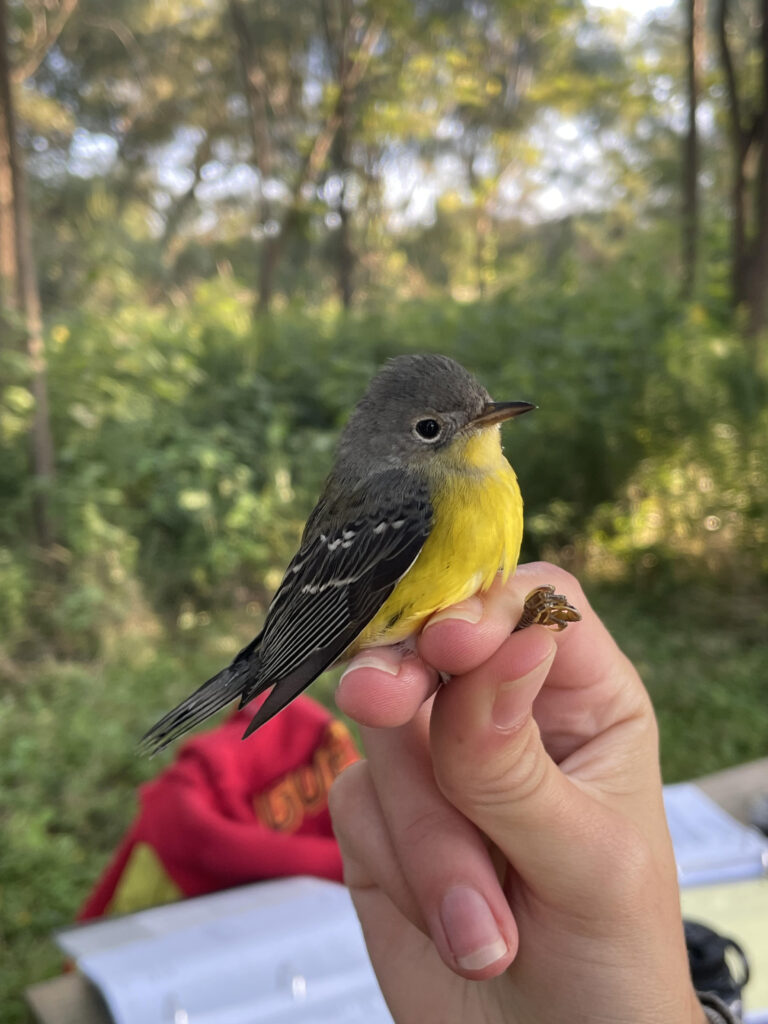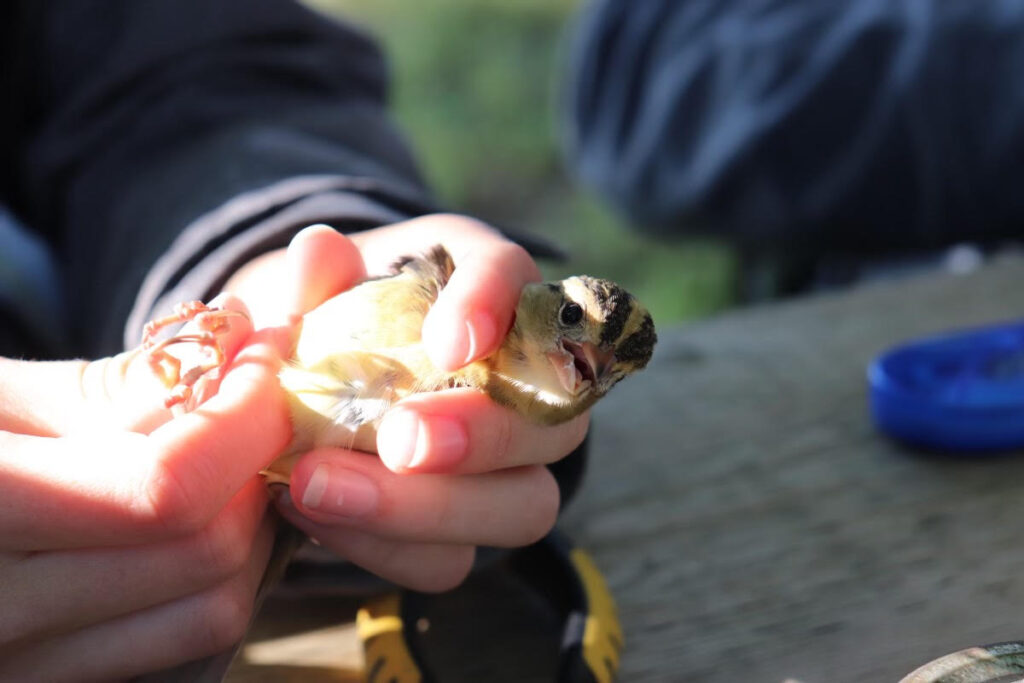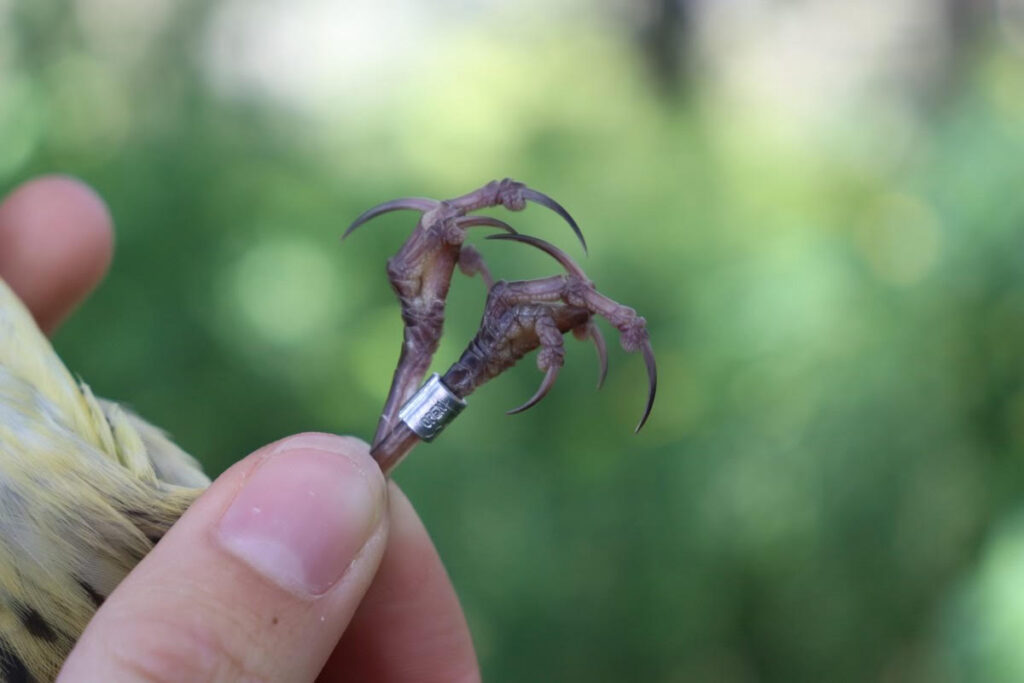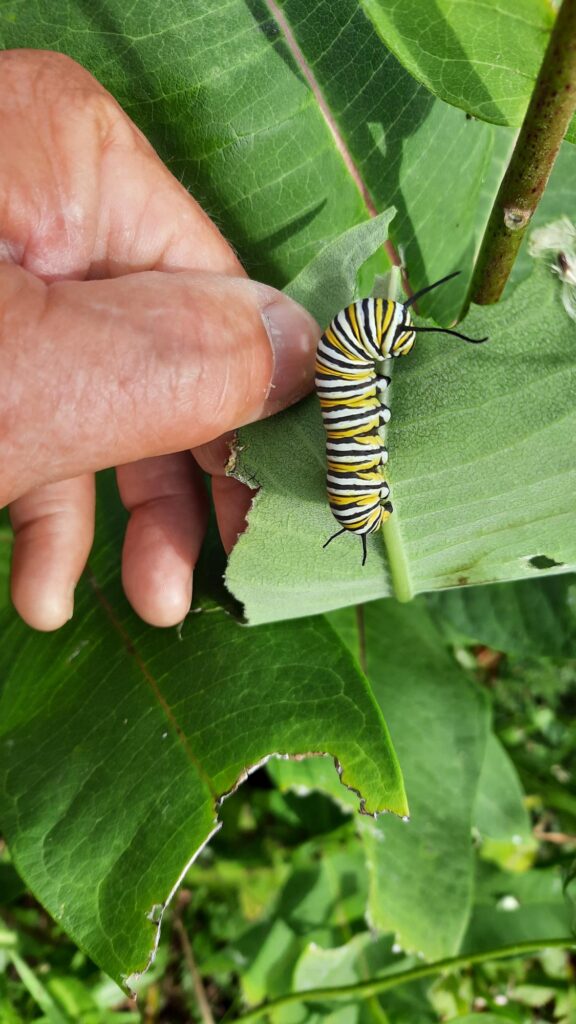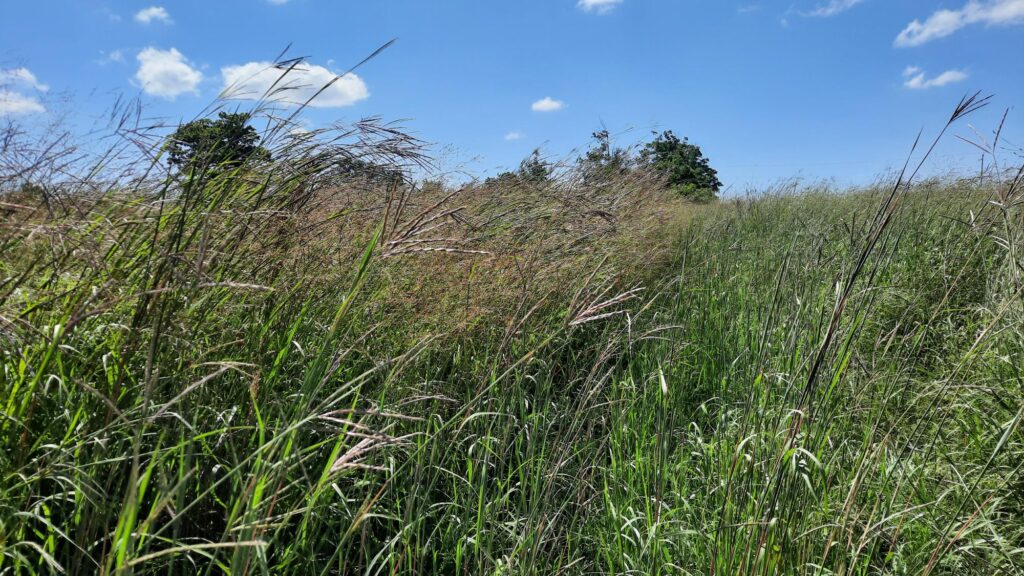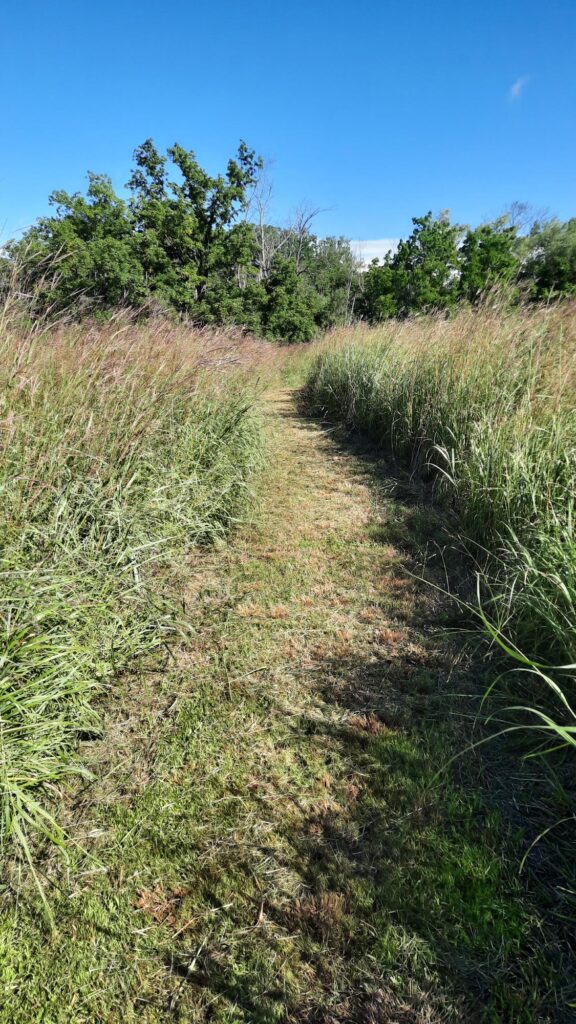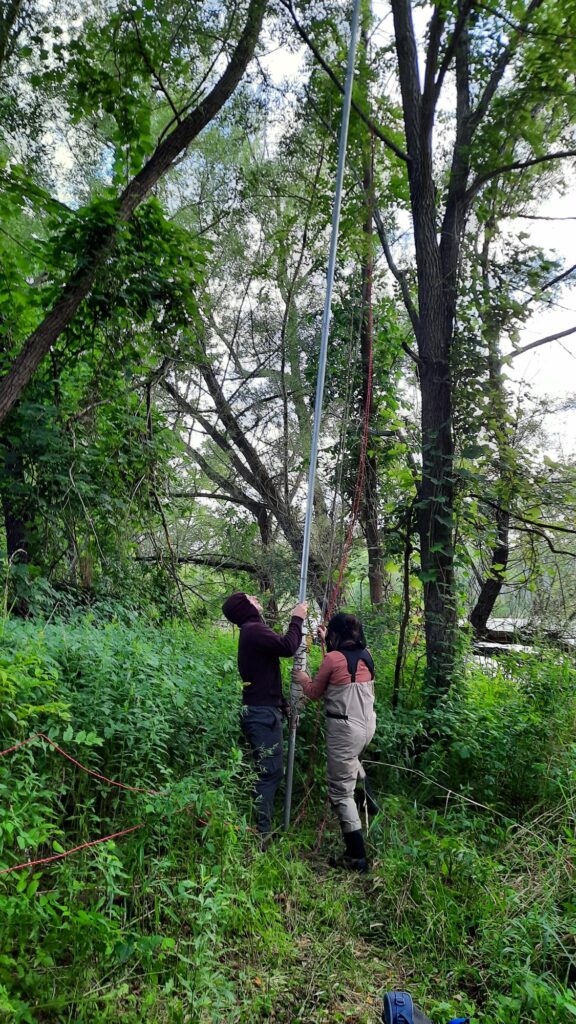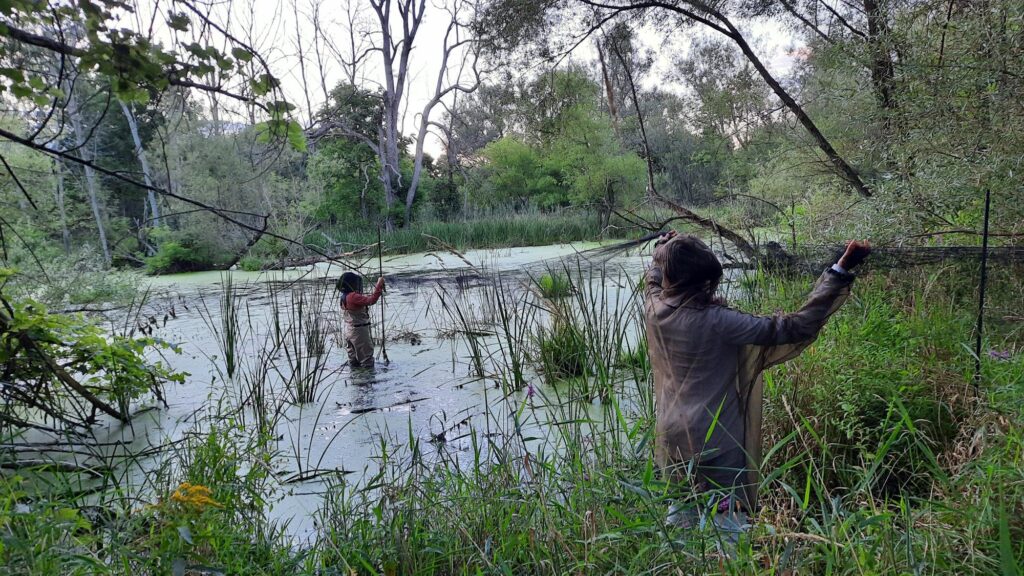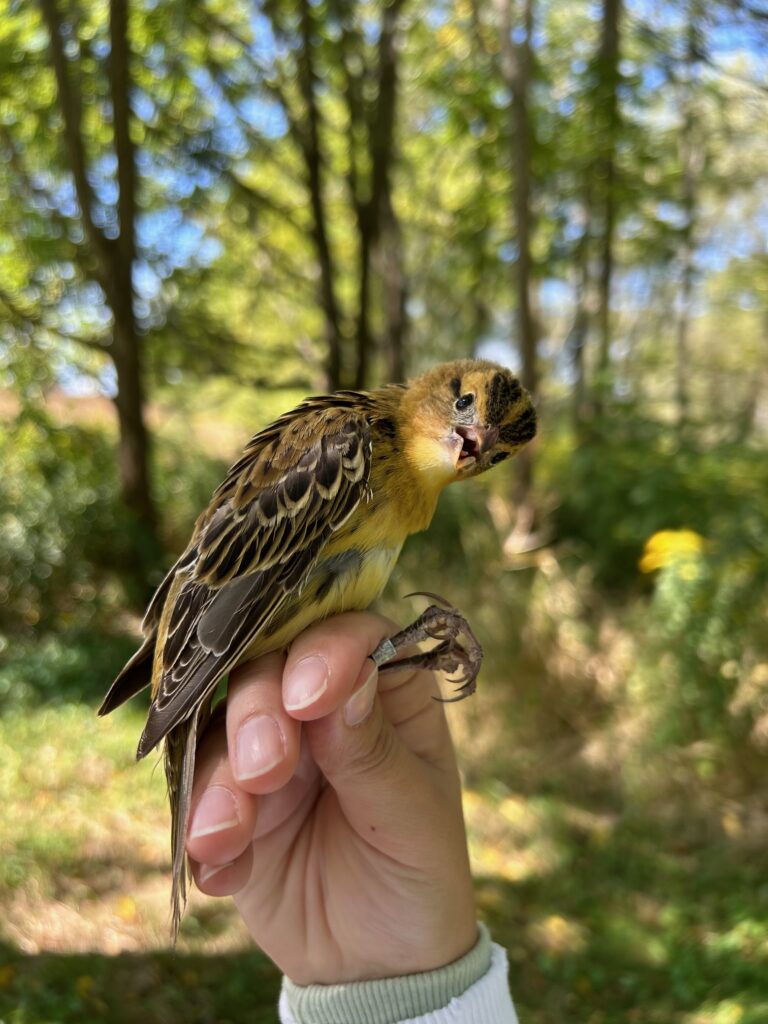
The star of the Fall has to be the Bobolink. They are attracted to the prairie grasses and we’ve seen up to 100 – and banded 80. -KDC
We’ve been busy, banding on 6 of the last 7 days. Each day is different both in terms of numbers banded and in the variety of birds seen at the site. But two species have been consistent: Bobolinks and Indigo Buntings. Part of the prairie field was mown with a wide swath left down the middle (more or less) and another along the pond/woodland edge. We cut 2 net lanes through the middle swath and they have been very effective catching Bobolinks and, to a lesser degree, Indigo Buntings – we’re also picking the latter up in nets along the edge. Both species are seed-eaters; the Bobolinks are fattening up for the long journey to Argentina and the buntings are finishing off their moults before heading for southern Florida and Central America.
And the field has LOTS of food!
Below, to simplify things (for me), I’ll list the birds banded each day and throw in a few pictures. We’ve had a number of very helpful volunteers…who also take good photos.
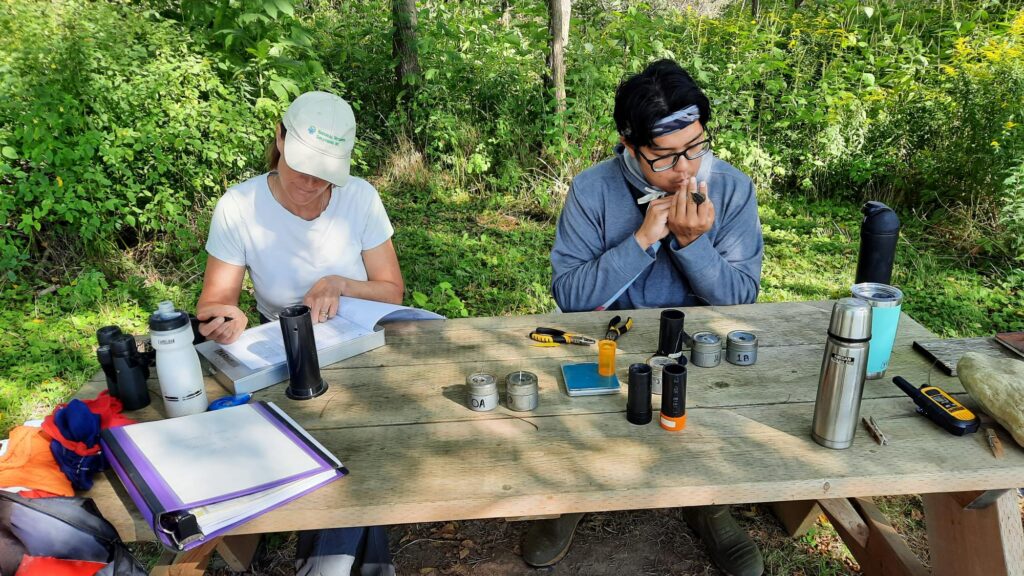
On good weather days we’ve had the luxury of banding outside. Here Elaine is scribing for Andy. -DOL
September 5th; Banded 45:
2 Yellow-bellied Flycatchers
1 Least Flycatcher
1 Blue-gray Gnatcatcher
1 House Wren
4 Song Sparrows
2 Swamp Sparrows
23 Bobolinks
3 Common Yellowthroats
1 Wilson’s Warbler
7 Indigo Buntings
ET’s: 34 spp.
September 6th; Banded 12:
1 House Wren
4 Song Sparrows
1 Swamp Sparrow
1 Savannah Sparrow
2 Bobolinks
3 Indigo Buntings
ET’s: 19 spp.
September 7th; Banded 49:
2 Eastern Wood-pewee
1 Traill’s Flycatcher
2 Least Flycatchers
1 Warbling Vireo
1 Gray Catbird
4 American Goldfinches
5 Song Sparrows
1 Swamp Sparrow
17 Bobolinks
2 Tennessee Warblers
1 Nashville Warbler
5 Common Yellowthroats
1 Blackpoll Warbler
3 Rose-breasted Grosbeaks
3 Indigo Buntings
ET’s: 42 spp.
September 8th; Banded 10:
2 Song Sparrows
4 Bobolinks
1 Common Yellowthroat
3 Indigo Buntings
ET’s: 36 spp.
September 9th; Banded 31:
1 Gray Catbird
2 American Goldfinches
1 Song Sparrow
1 Lincoln’s Sparrow
9 Bobolinks
1 Nashville Warbler
3 Common Yellowthroats
13 Indigo Buntings
ET’s: 24 spp.
Rick


